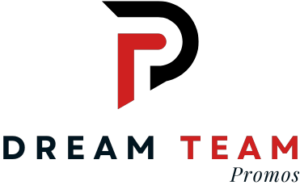Setting the right price for products in a webshop is a delicate balance. Price too high, and potential customers may look elsewhere. Price too low, and profit margins shrink unnecessarily. The challenge intensifies in highly competitive markets, where consumer behavior, demand, and competitors’ strategies shift rapidly. This is where a pricing tool with dynamic pricing capabilities becomes invaluable, offering a data-driven approach to pricing that not only simplifies decision-making but also accelerates market penetration.
How dynamic pricing enhances market penetration
Retailers who leverage dynamic pricing tools gain a significant edge. These solutions analyze market trends, competitor prices, and internal sales data in real time, allowing businesses to adjust their prices accordingly. By continuously having access to updated and relevant data, retailers can confidently set prices that maximize sales volume and profitability without relying on guesswork.
Dynamic pricing is particularly effective for market penetration. When entering a new market, pricing must be competitive enough to attract customers but sustainable enough to ensure profitability. With a dynamic pricing tool, retailers can identify optimal price points that drive initial customer interest while strategically increasing prices as brand recognition grows. This approach eliminates the risk of underpricing for too long or overpricing too soon, ensuring a smoother entry into competitive markets.
The power of real-time data in pricing decisions
Access to continuously updated data is the backbone of any successful dynamic pricing strategy. Traditional pricing methods often rely on periodic reviews, leaving businesses vulnerable to sudden market shifts. A dynamic pricing tool removes this uncertainty by providing real-time insights into:
- Competitor price fluctuations
- Customer demand patterns
- Seasonal and event-based sales trends
- Inventory levels and supply chain costs
With this information, retailers can make precise and timely pricing adjustments. For example, if a competitor suddenly drops their prices, the tool can immediately suggest a competitive response, ensuring the webshop remains attractive to potential buyers. Conversely, during peak demand periods, the tool can recommend raising prices to capitalize on high buying intent without losing sales, a key factor in maximizing market penetration.
Automation simplifies pricing strategies
Manual price adjustments are time-consuming and often inaccurate. Retailers trying to keep up with changing market conditions manually will likely struggle to maintain consistency and efficiency. A pricing tool automates this process, allowing businesses to implement predefined rules and algorithms that align with their overall pricing strategy.
For instance, a retailer might set a rule to always price a product 5% lower than the average market rate or maintain a certain margin regardless of competitor actions. Automation ensures these rules are consistently applied, freeing up valuable time for business owners and marketing teams to focus on broader strategic goals. Additionally, by minimizing human error, automated dynamic pricing leads to more precise and effective pricing decisions, helping businesses penetrate new markets faster and more effectively.
Market penetration made effortless
Gaining traction in a competitive market is challenging, but dynamic pricing makes it easier. One of the most effective strategies for market penetration is offering competitive prices without sacrificing long-term profitability. A pricing tool helps businesses execute this strategy by continuously monitoring market conditions and recommending price points that maximize early adoption while preparing for gradual increases.
New entrants can use penetration pricing, where initial lower prices attract a customer base. As demand stabilizes and brand recognition strengthens, the tool adjusts prices incrementally to improve profitability. This ensures a smooth transition from aggressive market entry to sustainable revenue growth without abrupt price hikes that might deter loyal customers.
Additionally, dynamic pricing tools can segment customers based on purchasing behavior. By analyzing buyer preferences, these tools allow for personalized pricing strategies. Retailers can offer introductory discounts to first-time buyers while optimizing prices for returning customers, creating a seamless path for market penetration and long-term retention.
Adapting to industry trends and economic shifts
Economic conditions, industry trends, and global events can significantly impact pricing strategies. A dynamic pricing tool helps retailers stay ahead by adapting prices to external factors. For example, during supply chain disruptions or inflation spikes, the tool can suggest incremental price adjustments to safeguard margins without alienating customers.
Similarly, in industries with fluctuating demand cycles—such as fashion, electronics, and consumer goods—dynamic pricing ensures that price changes align with demand surges and dips. This adaptability allows businesses to remain profitable even in volatile market conditions while maintaining a strong foothold in new markets.
Competitive edge through AI and machine learning
Many modern pricing tools leverage artificial intelligence (AI) and machine learning to refine pricing strategies further. These technologies analyze historical sales data and predict future trends, helping retailers set proactive price points rather than reactive ones. AI-driven pricing tools can:
- Identify patterns in customer purchasing behavior
- Forecast demand shifts
- Suggest optimal pricing adjustments based on past performance
By integrating AI-driven insights, retailers can move beyond basic competitor-based pricing and develop sophisticated strategies that enhance profitability while keeping prices attractive to consumers. This proactive approach ensures businesses remain competitive without constant manual intervention, facilitating quicker and more sustainable market penetration.
Seamless integration with e-commerce platforms
A significant advantage of modern dynamic pricing tools is their ability to integrate seamlessly with e-commerce platforms. Whether a retailer operates on Shopify, WooCommerce, Magento, or another system, dynamic pricing solutions can sync directly with product catalogs and automatically apply pricing updates. This ensures consistency across all sales channels, from the webshop to marketplaces like Amazon and eBay.
Integration also enables real-time monitoring of sales performance. If a particular product sees a sudden spike in demand, the tool can immediately recommend an appropriate price adjustment. Conversely, if sales slow down, the system can suggest discounts or promotions to reignite interest. This dynamic approach ensures retailers maintain optimal pricing at all times without manual intervention, a crucial component for successful market penetration.
Unlocking growth potential with dynamic pricing
Retailers who embrace dynamic pricing tools gain more than just an efficient way to set prices—they unlock the full growth potential of their webshop. By continuously analyzing market trends, automating pricing adjustments, and leveraging AI-driven insights, these tools create a strategic advantage that drives both market penetration and long-term profitability.
With real-time access to relevant data, retailers no longer have to guess their way through pricing decisions. Instead, they can confidently implement data-backed strategies that attract customers, improve margins, and establish a strong competitive position in their industry. As e-commerce continues to evolve, adopting a dynamic pricing tool is no longer an option—it’s a necessity for sustained success and effective market penetration.














